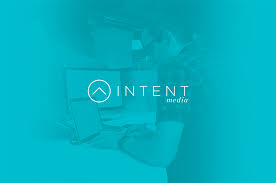Carbon
Carbon
Analytics.
Data Management.
Monetisation.
Built by publishers for publishers, one platform that enables you to measure, manage and monetise your audiences in real-time.
Carbon is an end-to-end revenue management platform (RMP) that unlocks the complex relationship between audience, content and revenue, enabling more profitable content, buy-side and sell-side strategies.
The Carbon Platform
-
Real time identity analytics and revenue attribution to unlock yield and contextual value across your content

-
Data management solutions for revenue-focused real time audience development, scoring, segmentation and activation

Features
-
Automated categorization
Through automated categorisation, Carbon enables publishers to increase the quantity and quality of first party assets, with uniquely scored signals mapped into a taxonomy built on IAB standards and layered with Carbon’s unique brand and keyword signals. Here’s how we do it.

Step one: Analysis
Carbon applies page analysis and NLP (Natural Language Processing) to sources including URLs, titles, meta tags and content to identify keywords.

Step two: Keyword matching
Carbon uses a language processing technique that builds word vectors (or word maps) to reveal the many relationships between keywords. By identifying context similarities (e.g. ‘bed’ and ‘pillow’ could both relate to sleep) and word structures (e.g. ‘sleep’ and ‘sleeping’) our machine learning can then match them to the most accurate category within the taxonomy.

Robust taxonomy
Our taxonomy is made up of 1000s of top and sub-level
categories of interests – based on the IAB’s content
taxonomy 2.2 – plus our custom nodes, brands, and
keywords to ensure granular categorization of signals to fuel accurate audience analysis and segmentation.

Data scoring
Carbon’s algorithms score our data based on 4 core statistical features of a site visit, offering the most reliable and accurate data signals for better performing audiences.

Step three: Optimisation
Our tech considers all relevant keyword signals; determining their strength based on the keywords referring to them, how important our algorithms have determined they are to the page, and our prior knowledge of what category the site falls into.
We regularly review the results of our algorithms to ensure no keywords are missed and no irregular classifications occur.
-
Contextual targeting

What is the Contextual targeting?
In environments where cookies or other identifiers are more challenging publishers need a way to safeguard their ad revenue and generate incremental revenues.
Contextual targeting enables publishers to target unknown or first-time users in real-time with relevant ads based on the URL and page content. Contextual targeting combines ad relevance with scale and precision by understanding the content that a user is consuming at the time of ad delivery.
- Monetise 100% of users including first page visits, whilst safeguarding revenue with a complementary alternative to behavioural targeting.
- Identify & reach addressable audiences efficiently in brand safe environments where identifiers aren’t present/available.
- Contextual data gives publishers highly valuable insights that can be combined & enriched with behavioural and revenue insights.
- Contextual advertising permits privacy-compliant targeted marketing in highly relevant environments without requiring data from customers.
Why you’ll love Carbon contextual targeting?

Carbon’s NLP/contextual modelling processes extract the meaningful content of any web page or article, which is identified and labelled based on the IAB’s content taxonomy 2.2 to relate the content to user interests.

Simple GAM setup
Leveraging GAM targeting code, key values and line items it enables Carbon’s tech to find and match page categories to IAB taxonomy 2.2 as determined by the automated categorisation (or manually overridden).

Real-time targeting & insights
Providing contextual targeting to buyers, whilst retaining the value of ad inventory and enriching 1st party data insights by combining contextual with behavioural and auction analytics to uncover further opportunities.

Carbon’s custom audience pixel can identify contextually relevant events such as time-on-page, number of pages visited in-session, and custom taxonomy terms in order to take contextual targeting further.
-
Custom Audience Pixel

What is the Custom Audience Pixel?
The Carbon Custom Audience Pixel is a piece of code that collects data on custom events based on how your audiences are engaging with your website. Carbon’s simple pixel builder allows publishers to easily create code for multiple pixels that they can then copy & paste onto the relevant site page or pages.
By collecting this data publishers can track custom conversions and activity (e.g. ad clicks, subscriptions, revenue events, etc) to learn more about them and build audiences for buyers and in-house campaigns.
How does the Custom Audience Pixel work?
When placed on a specific page/pages the custom audience pixel will fire each time the user event occurs. Once the pixel starts firing, publishers can then create audiences using a custom taxonomy or event tracking system, using either the number of times the pixel was fired as an attribute and/or defining event parameters. There are a range of event parameters that can be defined through the custom event function and linked to the pixel including subscriptions, custom taxonomy nodes, revenue events, and specific content consumption.

What events can the Custom Audience Pixel track?
Publisher’s most valuable audiences are often linked to specific actions, such as consuming certain content, clicking on an ad, signing up for a subscription, or having a custom interest unique to the publisher and highly valued by buyers. It’s important for publishers to be able to identify & activate these audiences across direct and programmatic, as well as driving in-house editorial and subscription optimisation.
The Custom Audience Pixel can be used for a range of custom tracking and targeting purposes to find these valuable audiences and understand how people are engaging with your properties. Some example use cases include:

Custom Taxonomy Nodes
Whilst Carbon follows the IAB Content Taxonomy 2.2 to cover industry standard terms, publishers can add their own unique nodes using a custom audience pixel to identify & create hyper relevant audiences based on terms not covered by the IAB.

Revenue per page view
In some circumstances publishers need to track & build audiences based on revenue events. Custom parameters can be used to assign revenue to pages and build audiences based on revenue recorded from the events, such as sponsored pages.

Specific site sections
When audiences are engaging with specific sections of your site they represent an opportunity to learn and activate against that engagement. Use the custom audience pixel to build an audience based on profiles seen on a specific site sections.

Subscription targeting
In order to target audiences most likely to convert into subscribers publishers can use the custom audience pixel to track when users subscribe to reveal key insights to drive more subscriptions, as well as inform other monetisation strategies.
-
Demographic modelling
Index model
In an index model, Carbon tech counts the number of users with known data to hit a url (e.g. the number of known male and female users) and represents these as a percentage, i.e. 67% female and 33% male. To infer the gender of an unknown user, the index model averages across all urls a user has hit, returning confidence levels for each demographic, i.e. 54% female, 46% male.
This type of model is very effective, as it allows us to get a less biased view of a page. There is also minimal startup time and the model adapts to new content. We use index models to gain first party demographics for income, age, gender, education, and the presence of children.

Contextual model
This model works by predicting gender based on the content of the pages a profile visits. Techniques like TF-IDF (term frequency-inverse document frequency) are used to determine the important information on a page to be used as input features such as page keywords/categories and browser.
Carbon’s tech then learns what inputs accurately map to the signal of known output signals – in this case demographics. Labelled data (such as user on page declared data) is used to train the model and enables us to provide confidences of a page’s demographics. Once trained this model runs independently from any third party data.
Interest-based model
The model works by providing predictions based on the interests associated with a profile. Interests are gathered from the pages visited by a profile. Two gender clusters are created, male and female, with all interests associated with labeled users of either gender. Predictions are made by comparing an unlabelled user to either gender cluster and seeing which they are more alike to.

Demographic strength
When creating a segment in the platform based on any demographic, strength is presented as a slider to enable the setting of minimum confidence levels. The diagram (right) illustrates the age confidence levels for a user where the most likely age group is 25-34. This user could also be included in a segment targeting the 18-24 age group with medium confidence, as well as a segment targeting the 55-64 age group with low confidence.
This is to illustrate the targeting mechanism of Carbon. Regardless of the most likely demographic group of a user, if they display enough behavior of another demographic group and the strength level is low enough, they will be included in other demographic segments.
-
Machine-driven data scoring
Despite the fact that no two visits to a web page are the same, many data companies will still categorise them in the same way. We don’t, and by scoring our data we offer the most reliable and accurate signals of intent for better performing audiences.

Intent data goes beyond interest
Intent data goes beyond interests by leveraging additional contextual touch points – such as what type of site the user is on – and deeper taxonomies to give more accurate signals.

Brand affinity data
Similar to how people show an intent-to-buy, they often show an affiliation to specific brands such as football teams, clothing brands and tech products. That’s why Carbon’s taxonomy has 100s of brands within it, and the tech to assign & score them accordingly.

Activate audiences with confidence
By using scored intent and brand affinity signals, Carbon enables users to build & activate audiences based on where they are in the purchase cycle or level of affiliation to a brand.
Key benefits

More addressable audiences
Create more addressable audiences to increase the value of your inventory and attract more direct media buys & PMPs.

Improved yields & revenue
Higher CPMs and improved yields by filling your premium inventory with addressable audiences.

Complete transparency
Audience & revenue reporting to show the content, audiences and partners driving results to fuel further optimisation and deals.

Speed and scalability
Combining edge, cloud and server infrastructure with AI to ensure audiences can be built & activated as quick as needed.

Scored intent & brand signals
Unique intent and brand category data scoring leads to deeper, more accurate profiling and more relevant, high performing audiences.

Brand safety & control
Have more control over the brands and buyers advertising to your most valued audiences.

Data driven ad unit innovation
Dynamic ads built on Prebid to easily add demand partners to drive competition and higher CPMs.

100% of your audience
Custom events and pixel tracking for a range of events ensures we can profile 100% of your audience, including AMP.








